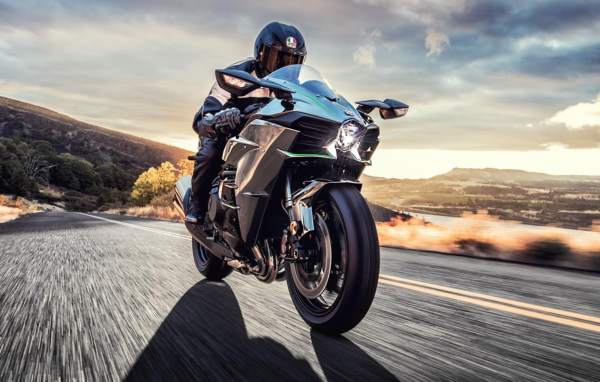
It’s become an icon of modern motorcycle motoring but speculation from Japan suggests the Kawasaki Ninja H2 and Kawasaki Ninja H2R flagship ‘hyper’ sportsbikes will not continue beyond the 2021 model year.
The rumours come via Young Machine, often a very reliable source of insider information from the big four Japanese manufacturers, so we’re inclined to believe the validity of them.
The Kawasaki H2 made its bow in 2015 and immediately snatched headlines and transcended typically motorcycle motoring press with its outlandish styling, ferocious supercharged engine and some mind-boggling top speed declarations, particularly in track-only H2R guise.
In street-legal trim the H2 was launched with 207bhp, though this was wound up to 228hp for 2019 to push the envelope further.
However, these have always been imposed limitations to ensure it can meet legal requirements on the road, with the special Kawasaki H2R able to go all the way up to 326hp with ram air - and a 250mph unlimited top speed - making it the fastest and most powerful production motorcycle on the market.
Something of a spiritual successor to the Suzuki Hayabusa in the era of motorcycle performance and technological benchmarking, Young Machine reports the Kawasaki Ninja H2 - which doesn’t currently meet Euro5 regulations - will head the same of the recently discontinued ‘hyperbike’ having production wound down from 2021 with limited availability.
The legacy of the Kawasaki Ninja H2
Given the relatively short life cycle, it’s not beyond the realms of possibility that the H2 won’t be replaced at some stage in another form, though in the short-term it’s worth pointing out the firm’s main priority right now will be replacing the Kawasaki ZX-10R/RR ranges in the next 12 to 18 months.
However, one could suggest the H2’s demise could explain why the range was expanded in 2020 to include the Z H2 ‘hyper naked’, which provides more relevance in terms of volume while carrying on the H2 name, even if it is not quite as bonkers.
Moreover, the Kawasaki H2 does effectively live on in the Bimota TESI H2, which this week made its official production bow, which could essentially be viewed as a second generation H2.
By transferring the technology and engineering to the Italian marque, the work that has gone into the H2 won’t go to waste while providing the company - which owns 49% of Bimota now - a revenue stream from it without necessarily needing to replace it, as well as stop the two machines from competing against one another in a niche marketplace.

